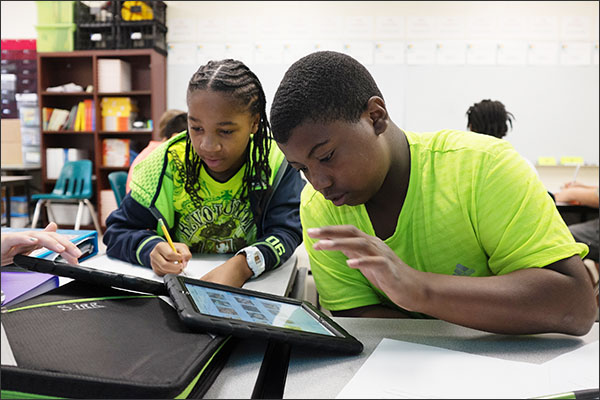Technology offers boundless opportunities to amplify learning for middle school students. Effectively integrating technology transforms passive learners into active, engaged participants with access to a dynamic set of resources. This article explores strategies for meaningfully incorporating technology across subject areas to enrich instruction and equip middle school students with digital literacy skills.
Leverage Digital Devices in a 1:1 Environment
Providing each student access to an Internet-connected device such as a laptop, Chromebook or tablet enables seamless technology integration. In a 1:1 environment, digital devices become powerful personalized learning tools. For example:
- Students can conduct web-based research, record findings and create projects
- Teachers can provide instant online feedback and assessments
- Learners work at their own pace through adaptive software programs
According to education technology researcher Dr. Melinda George, “Technology integration is defined not by the amount or type of technology used, but by how and why it is used.” 1:1 programs shift focus to meaningful applications.
Curate Educational Apps and Software
Thoughtfully curated apps and software maximize the learning payoff of classroom technology. Evaluate programs for:
- Alignment to middle grades curricular standards
- User-friendly design tailored to adolescent learners
- Embedded assessments, data reports and differentiation
- Interactive, game-based elements to motivate students
For example, apps that let students manipulate 3D models of cells, practice math skills through gaming, or record themselves giving speeches. The most impactful programs encourage content creation, not just consumption. As Bill Gates advises, “Technology is just a tool. In terms of getting the kids working together and motivating them, the teacher is the most important.” Purposefully chosen tools can inspire middle schoolers.
Provide Creative Production Opportunities
Technology allows learners to move from passive to active by providing creative production opportunities. Students synthesize their developing skills and knowledge into original digital products. For instance:
- Coding and animating stories or games
- Editing and publishing written work in digital formats
- Producing podcasts, videos and multimedia presentations
- Building websites, charts or 3D models to demonstrate learning
Creating with technology cultivates communication, collaboration, critical thinking, and innovation – key competencies for digital citizenship. According to educator Mitch Resnick, “The best learning happens when students take charge of their own learning.” Student-directed technology creation empowers adolescent learners.
Incorporate Interactive Media
Interactive media tools like digital graphic organizers, manipulatives and simulations immerse students in learning. This media actively responds to learners’ input. Benefits include:
- Virtual science labs teach through hands-on experimentation
- Interactive maps allow students to manipulate geographic data
- Digital graphic organizers provide scaffolds for research and writing
- Customizable manipulatives like virtual algebra tiles
Rather than passively reading about concepts, dynamic digital tools enable students to interactively construct knowledge. Education theorist Seymour Papert reminds us, “The role of the teacher is to create the conditions for invention rather than provide pre-packaged knowledge.” Interactive media provides space for students to build their own connections.
Facilitate Online Collaboration
Online platforms allow middle schoolers to learn collaboratively by exchanging ideas beyond the classroom. For example:
- Using Padlet for virtual corkboard brainstorming
- Collaborating on group documents and presentations in Google Drive
- Discussing texts and posting work for peer feedback on class websites
- Contributing to wikis showcasing class knowledge
Developing this online community expands peer interactions. According to educational researcher Robert Marzano, “Cooperative learning provides students with an opportunity to engage in discussion, take responsibility for their own learning, and thus become critical thinkers.” Technology boosts cooperative learning.
Conclusion
Integrating technology effectively takes careful planning to build students’ content knowledge, creativity, and critical thinking. But guided by purposeful pedagogy, technology can enlarge adolescent learners’ worldviews while preparing them with transferable digital literacy skills. Technology is not a silver bullet, but rather a powerful catalyst when combined with engaging instruction. As education professor Heidi Hayes Jacobs advises, “Curriculum and technology are intertwined.” Though this interweaving, middle grades teachers enrich learning in unprecedented ways.
















